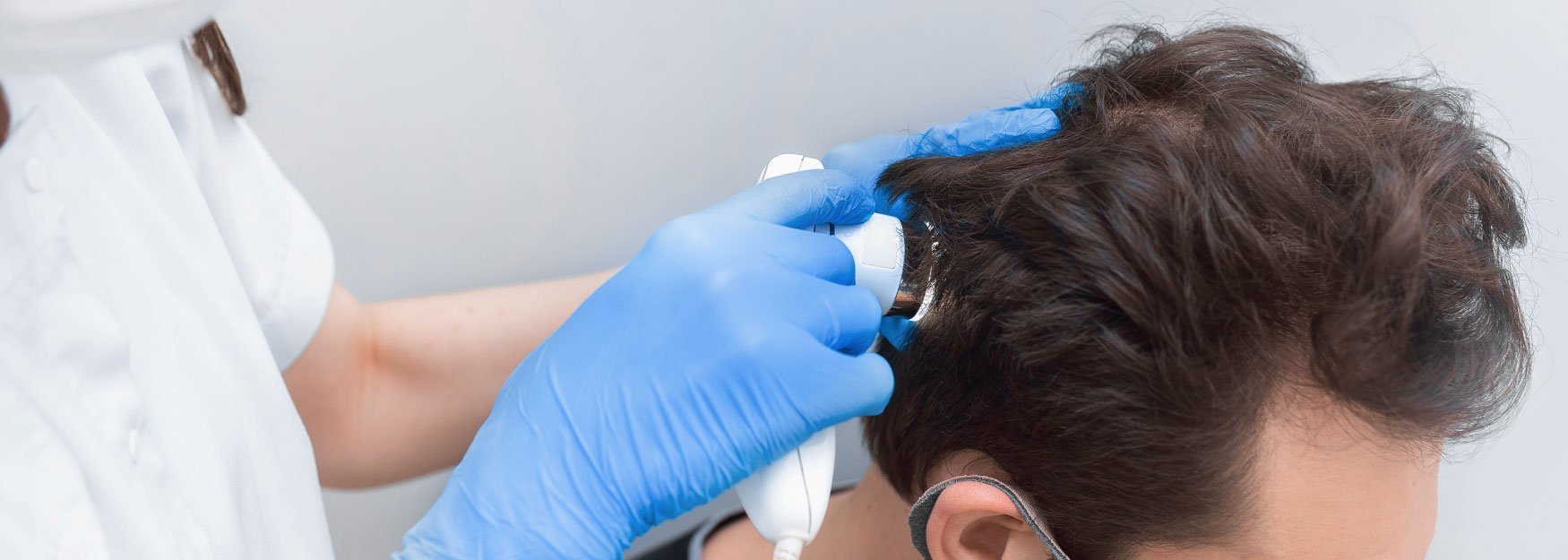
BHRC BLOG
The Ultimate Guide To Hair Loss Treatment
Hair loss affects more than 50 million men and more than 30 million women each year across the United States. Though people can feel alone in their search for hair loss treatment, it’s much more commonplace than they often realize. Hair loss can have a devastating and demoralizing effect on an individual, but it doesn’t have to be. Procedures to reverse hair loss have improved by leaps and bounds in recent years.
This Ultimate Guide to Hair Loss Treatment first details the causes of hair loss. Knowing why hair loss happens proves to be the first step in understanding treatment. The second part digs into both the surgical and non-surgical treatment options that are available to address hair loss.
What Causes Hair Loss?
Hair loss can be either temporary or permanent, and it can have a myriad of causes. The first step in determining what kind of hair loss treatment will be most appropriate lies in uncovering the reasons behind hair loss.
It’s a common myth that stress causes hair loss. While extreme stress can be a cause of hair falling out, think the death of a close family member or a car crash, the average person isn’t going to start losing hair over average levels of stress. Even in the case of those extreme stress situations, permanent hair loss is highly unusual.
Uncommon causes of hair loss include extreme nutrient deficiencies, excessive hair pulling (traction alopecia) from tight hairstyles, scalp infections, or medications. All of these are unusual and nearly always temporary. It’s important to consult with a doctor concerning hair loss to determine what underlying issues might exist that could be damaging to overall health.
Hair loss is most often caused in both men and women by miniaturization, a process in which hair follicles hare triggered to grow shorter and shorter periods by the hormone dihydrotestosterone. Hair becomes small and weak, before eventually stopping growth completely. Unfortunately there is no way to stop miniaturization before it begins. However once it has begun, hair loss treatment options can effectively turn back the clock.
Once the cause of hair loss has been determined by a doctor, it’s time to explore treatment options. There are two ways to go about treatment for hair loss – surgical and non-surgical.
Non-Surgical Hair Loss Treatment Options
Non-surgical hair loss treatments typically include ingestible prescription medications such as hormone treatment or Finasteride to slow down or in some cases reverse the symptoms of hair loss. Rogaine and topical corticosteroids are contact treatments that can be effective.
- Topical treatments are creams or foam that are applied directly to the scalp where the hair falls out.
The most popular topical hair loss treatments is Minoxidil, also known as Rogaine, is available over the counter. Corticosteroids can also be applied to the scalp in order to encourage hair growth, or injected under the skin for a greater effect. Topical creams only work while they’re being applied – once the individual stops putting them on the scalp, the effects stop. Side effects of topical treatments most commonly include redness and scalp irritation.
- Internal treatments come in the form of a pill taken daily by mouth.
Estrogen and progesterone are two hormones that can be prescribed by a doctor in order to help grow hair in women. This same combination can be used in a cream, but has far less effectiveness. Finasteride combats male pattern baldness in a prescription pill. Associated with severe birth defects, Finasteride is effective for many men but must be kept away from women of child bearing age.
Some individuals can find dramatic results with these types of treatments. This explains why they are so popular among both men and women who are experiencing hair loss. The largest drawback of non-surgical hair loss treatment effectiveness. Only 30-50% of people who use prescription hair loss drugs see positive results.
Surgical Hair Restoration Options
Surgical hair restoration including scalp stretching, strip transplanting, or follicular unit extraction. All three offer a long term, effective solution for hair loss. Unlike non-surgical solutions, the results are permanent. However these procedures do involve all of the risks associated with any surgical procedure.
One method of hair transplantation involves surgically transplanting strips of hair from places with thicker hair to bare spots. Scarring is unfortunately common with these procedures, especially at the site where harvesting takes place. When done well, that scarring can be hidden underneath the new lines of hair.
Scalp stretching offers another effective surgical hair restoration option. In this procedure, parts of the skin without hair are removed and the fuller portions of the scalp stretched over the bare spots. The most common side effect with scalp stretching is scarring, but a good surgeon can hide most of the scarring under the new hairline.
NeoGraft hair restoration Follicular Unit Extraction (FUE) offers both men and women the best solution for hair restoration. Approved by the FDA, NeoGraft FUE offers the most advanced form of treatment available for hair loss. This nearly pain free method of surgical hair restoration uses an automated technique which individually extracts hair follicles from one area and transplants them to another. The follicles are completely intact throughout the process, which means that hair growth is not interrupted. New hair growth becomes visible within just a couple of months, and the process itself stays permanent.
In addition to surgically restoring hair, the new NeoGraft LTS Red/Green procedure can stimulate hair growth of follicle right where they are. This treatment floods follicles with oxygen, increasing growth and producing long term results.
Which hair loss treatment offers the most effectiveness for you and how to get started is up to you and your doctor.
Where to Go for Hair Loss Treatment Guidance
Every person’s needs are different, and it takes an individualized approach to hair loss treatment to be effective. The earlier interventions begin, the more effective they are. Getting a consultation from a highly qualified specialist in hair loss prevention and hair loss restoration offers the best way to find the guidance that you need to look your best and regain confidence.
Top quality hair loss treatment in Los Angeles is available through Beverly Hills Rejuvenation Center, with locations for hair restoration in Dallas and hair loss treatment in Las Vegas, as well as treatment centers in other locations across the country. Contact BHRC today to set up a free hair loss consultation to start on the path to a full and beautiful head of hair.
What’s your experience with hair loss products? Have we missed anything in this “ultimate guide”? Let us know in the comments!
Resources






